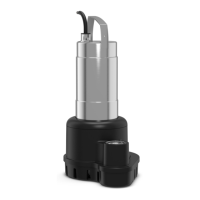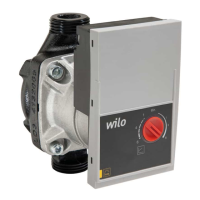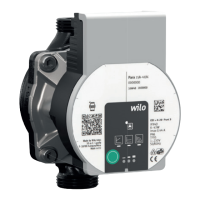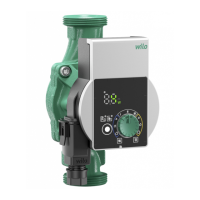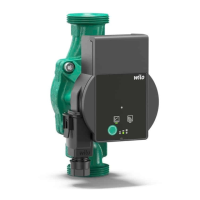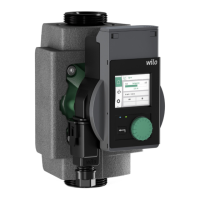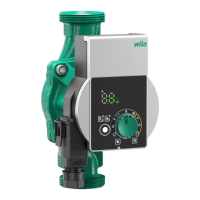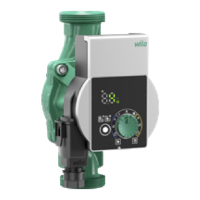en
8 Installation and operating instructions • Wilo-Padus MINI3 • Ed.01/2022-06
Use inside and outside buildings
NOTICE
For use inside buildings only
Use pumps with a connection cable less than 10m
(33ft) long only inside buildings. Use outside build-
ings is prohibited!
Pump type
Connection cable
length
Outdoor application
Indoor application
Padus MINI3-...-5M 5m (16.5ft) — •
Padus MINI3-...-10M 10m (33ft) • •
Key:
— = Not permitted, • = Permitted
3.2 Improper use
DANGER
Explosion due to pumping of explosive fluids!
Pumping of highly flammable and explosive fluids
(gasoline, kerosene, etc.) in pure form is strictly pro-
hibited. There is a risk of fatal injury due to explo-
sion! The pumps are not designed for these fluids.
The submersible pumps must not be used for pumping:
• Untreated sewage
• Sewage containing faeces
• Drinking water
• Fluids containing hard components (such as stones, wood,
metal, etc.)
• Fluids containing high quantities of abrasive contents (e.g.
sand, gravel).
• Viscous fluids (e.g. oil and grease)
• Seawater
Intended use also includes compliance with this manual. Any other
use is regarded as non-compliant with intended use.
4 Transport and storage
CAUTION
Soaked packaging may tear!
The product may fall on the ground if unprotected
and may be damaged. Lift wet packaging carefully
and replace it immediately!
• Wear protective equipment!
• Carry the pump by the handle. Never carry or pull on the con-
nection cable!
• Clean the pump and disinfect if necessary.
• Close the discharge connection.
• Protect the connection cable against kinking and damage.
• Use original packaging for transport and storage.
• Pack the pump when dry. Wet or humid pumps may soften the
packaging.
• Storage conditions:
– Maximum: -15...+60°C (5...140°F), max. humidity: 90%,
non-condensing
– Recommended: 5...25°C (41...77°F), relative humidity:
40…50%
5 Installation and electrical connection
5.1 Installation types
• Vertical stationary wet well installation
• Vertical portable wet well installation
5.2 Installation
• Wear protective equipment!
• Do not install a damaged or defective pump.
• Frost-free location.
• Lay the connection cable properly. During operation there must
be no danger (stumbling, damage, etc.).
• Float switch must be able to move freely!
5.2.1 Stationary wet well installation
For stationary wet well installation, the pump is installed directly
onto the pressure pipe. Observe and adhere to the following
points:
• The connected pressure pipe must be self-supporting. The
pressure pipe must not be supported by the pump.
• The pump may oscillate slightly during operation. These oscilla-
tions must be dissipated via the pressure pipe.
• Ensure that the connection to the pressure pipe is stress-free–
do not screw it in too tightly.
• The pressure pipe must not be smaller than the pump’s dis-
charge connection.
• Seal pipe connections with Teflon tape.
• Install all specified valves in accordance with local requirements
(gate valve, non-return valve).
• Lay the discharge pipe frost-proof.
• Air pockets in the pump and in the discharge pipe can lead to
delivery problems.
Installing the ventilation systems:
– For example, air vent valve
– In the discharge pipe
– Before the non-return valve
• Install the discharge pipe as a “pipe loop” to avoid backflow
from the main public sewer.
At its highest point, the bottom edge of the pipe loop must be
above the locally determined backflow level!
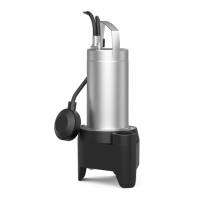
